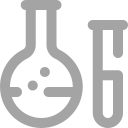
Product Description
Phospho-PI3-kinase p85- alpha (Tyr607) Antibody detects endogenous levels of PI3-kinase p85- alpha only when phosphorylated at Tyrosine 607.
PIK3R1 is a regulatory subunit of phosphoinositide-3-kinase. Mediates binding to a subset of tyrosine-phosphorylated proteins through its SH2 domain. Acts as an adapter, mediating the association of the p110 catalytic unit of the alpha, beta and delta enzymes to the plasma membrane, where p110 phosphorylates inositol lipids. May play an additional role in the regulation of the actin cytoskeleton. Necessary for the insulin-stimulated increase in glucose uptake and glycogen synthesis in insulin-sensitive tissues. Its SH2 domains interacts with the YTHM motif of phosphorylated INSR in vitro. Defects in PIK3R1 are a cause of severe insulin resistance. Four alternatively spliced isoforms have been described.

Information
Research AreaSignal transduction.
Species ReactivityHuman, Mouse, Rat, Pig
Host SpeciesRabbit
Immunogen / Amino acidsA synthesized peptide derived from human PI3-kinase p85- alpha around the phosphorylation site of Tyrosine 607.
ClonalityPolyclonal

Specifications
FormLiquid
Storage BufferpH 7.4, 150mM NaCl, 0.02% sodium azide and 50% glycerol
Concentration1mg/ml
Tested ApplicationWB,IHC,IF/ICC,ELISA
Recommended DilutionWB 1:500-1:2000
IHC 1:50-1:200
IF/ICC 1:100-500
ELISA(peptide) 1:20000-1:40000

Misc Information
Storage InstructionStore at -20 °C, Avoid repeated Freezing/Thawing
Alternative NamesGRB 1; GRB1; p85 alpha; p85; P85A_HUMAN; Phosphatidylinositol 3 kinase associated p 85 alpha; Phosphatidylinositol 3 kinase regulatory 1; Phosphatidylinositol 3 kinase regulatory subunit alpha; Phosphatidylinositol 3 kinase regulatory subunit polypeptide 1 (p85 alpha); Phosphatidylinositol 3-kinase 85 kDa regulatory subunit alpha; Phosphatidylinositol 3-kinase regulatory subunit alpha; Phosphoinositide 3 kinase regulatory subunit 1 (alpha); Phosphoinositide 3 kinase regulatory subunit 1 (p85 alpha); Phosphoinositide 3 kinase regulatory subunit 1; Phosphoinositide 3 kinase regulatory subunit polypeptide 1 (p85 alpha); PI3 kinase p85 subunit alpha; PI3-kinase regulatory subunit alpha; PI3-kinase subunit p85-alpha; PI3K; PI3K regulatory subunit alpha; Pik3r1; PtdIns 3 kinase p85 alpha; PtdIns-3-kinase regulatory subunit alpha; PtdIns-3-kinase regulatory subunit p85-alpha;
Predicted Molecular Weight84kDa.
Observed Molecular Weight80kDa
SequenceMSAEGYQYRA LYDYKKEREE DIDLHLGDIL TVNKGSLVAL GFSDGQEARP
EEIGWLNGYN ETTGERGDFP GTYVEYIGRK KISPPTPKPR PPRPLPVAPG
SSKTEADVEQ QALTLPDLAE QFAPPDIAPP LLIKLVEAIE KKGLECSTLY
RTQSSSNLAE LRQLLDCDTP SVDLEMIDVH VLADAFKRYL LDLPNPVIPA
AVYSEMISLA PEVQSSEEYI QLLKKLIRSP SIPHQYWLTL QYLLKHFFKL
SQTSSKNLLN ARVLSEIFSP MLFRFSAASS DNTENLIKVI EILISTEWNE
RQPAPALPPK PPKPTTVANN GMNNNMSLQD AEWYWGDISR EEVNEKLRDT
ADGTFLVRDA STKMHGDYTL TLRKGGNNKL IKIFHRDGKY GFSDPLTFSS
VVELINHYRN ESLAQYNPKL DVKLLYPVSK YQQDQVVKED NIEAVGKKLH
EYNTQFQEKS REYDRLYEEY TRTSQEIQMK RTAIEAFNET IKIFEEQCQT
QERYSKEYIE KFKREGNEKE IQRIMHNYDK LKSRISEIID SRRRLEEDLK
KQAAEYREID KRMNSIKPDL IQLRKTRDQY LMWLTQKGVR QKKLNEWLGN
ENTEDQYSLV EDDEDLPHHD EKTWNVGSSN RNKAENLLRG KRDGTFLVRE
SSKQGCYACS VVVDGEVKHC VINKTATGYG FAEPYNLYSS LKELVLHYQH
TSLVQHNDSL NVTLAYPVYA QQRR
Purificationaffinity purification
NotesSubunit Structure:
Interacts (via SH2 domain) with CSF1R (tyrosine phosphorylated). Interacts with PIK3R2; the interaction is dissociated in an insulin-dependent manner (By similarity). Interacts with XBP1 isoform 2; the interaction is direct and induces translocation of XBP1 isoform 2 into the nucleus in a ER stress- and/or insulin-dependent but PI3K-independent manner (PubMed:20348923). Heterodimer of a regulatory subunit PIK3R1 and a p110 catalytic subunit (PIK3CA, PIK3CB or PIK3CD). Interacts with FER. Interacts (via SH2 domain) with TEK/TIE2 (tyrosine phosphorylated). Interacts with PTK2/FAK1 (By similarity). Interacts with phosphorylated TOM1L1. Interacts with phosphorylated LIME1 upon TCR and/or BCR activation. Interacts with SOCS7. Interacts with RUFY3. Interacts (via SH2 domain) with CSF1R (tyrosine phosphorylated). Interacts with LYN (via SH3 domain); this enhances enzyme activity (By similarity). Interacts with phosphorylated LAT, LAX1 and TRAT1 upon TCR activation. Interacts with CBLB. Interacts with HIV-1 Nef to activate the Nef associated p21-activated kinase (PAK). This interaction depends on the C-terminus of both proteins and leads to increased production of HIV. Interacts with HCV NS5A. The SH2 domains interact with the YTHM motif of phosphorylated INSR in vitro. Also interacts with tyrosine-phosphorylated IGF1R in vitro. Interacts with CD28 and CD3Z upon T-cell activation. Interacts with IRS1 and phosphorylated IRS4, as well as with NISCH and HCST. Interacts with FASLG, KIT and BCR. Interacts with AXL, FGFR1, FGFR2, FGFR3 and FGFR4 (phosphorylated). Interacts with FGR and HCK. Interacts with PDGFRA (tyrosine phosphorylated) and PDGFRB (tyrosine phosphorylated). Interacts with ERBB4 (phosphorylated). Interacts with NTRK1 (phosphorylated upon ligand-binding). Interacts with herpes simplex virus 1 UL46 and varicella virus ORF12; these interactions activate the PI3K/AKT pathway. Interacts with FAM83B; activates the PI3K/AKT signaling cascade (PubMed:23676467).
ModificationPolyubiquitinated in T-cells by CBLB; which does not promote proteasomal degradation but impairs association with CD28 and CD3Z upon T-cell activation.Phosphorylated. Tyrosine phosphorylated in response to signaling by FGFR1, FGFR2, FGFR3 and FGFR4. Phosphorylated by CSF1R. Phosphorylated by ERBB4. Phosphorylated on tyrosine residues by TEK/TIE2. Dephosphorylated by PTPRJ. Phosphorylated by PIK3CA at Ser-608; phosphorylation is stimulated by insulin and PDGF. The relevance of phosphorylation by PIK3CA is however unclear (By similarity). Phosphorylated in response to KIT and KITLG/SCF. Phosphorylated by FGR.
FunctionBinds to activated (phosphorylated) protein-Tyr kinases, through its SH2 domain, and acts as an adapter, mediating the association of the p110 catalytic unit to the plasma membrane. Necessary for the insulin-stimulated increase in glucose uptake and glycogen synthesis in insulin-sensitive tissues. Plays an important role in signaling in response to FGFR1, FGFR2, FGFR3, FGFR4, KITLG/SCF, KIT, PDGFRA and PDGFRB. Likewise, plays a role in ITGB2 signaling (PubMed:17626883, PubMed:19805105, PubMed:7518429). Modulates the cellular response to ER stress by promoting nuclear translocation of XBP1 isoform 2 in a ER stress- and/or insulin-dependent manner during metabolic overloading in the liver and hence plays a role in glucose tolerance improvement (PubMed:20348923).